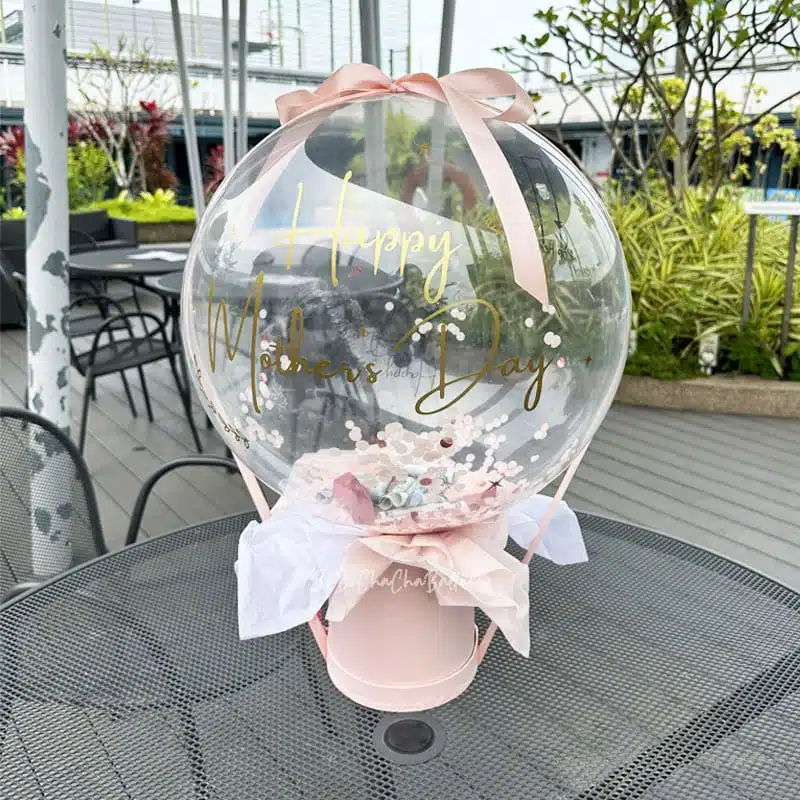Understanding How Balloons Float: The Physics Behind It
Have you ever wondered what makes balloons float? Whether it’s at a birthday party, a wedding, or a festive event, helium balloons always add a touch of magic with their ability to defy gravity. But what’s the science behind this delightful phenomenon? Understanding the physics of floating balloons can be fascinating, and they can even be used as educational tools to demonstrate the principles of buoyancy and density.
The magic of helium balloons
Helium balloons are a common sight at celebrations, instantly lifting the atmosphere and adding a whimsical charm to any event. Unlike regular balloons filled with air, helium balloons float effortlessly, creating an eye-catching display. This difference in behaviour boils down to the properties of helium and how it interacts with the environment.
Helium is a lighter-than-air gas, meaning it is less dense than the air we breathe. When a balloon is filled with helium, the overall density of the balloon (including the helium inside it) becomes less than the density of the surrounding air. According to the principles of buoyancy, an object will float if it is less dense than the fluid it displaces. In this case, the helium balloon displaces a volume of air that is heavier than the balloon itself, causing it to rise and float.
The principle of buoyancy
Buoyancy is a fundamental concept in physics that explains why objects float or sink in a fluid. Discovered by the ancient Greek mathematician Archimedes, the principle states that an object immersed in a fluid is buoyed up by a force equal to the weight of the fluid displaced by the object. This principle is the key to understanding why helium balloons float.
When a helium balloon is released, it displaces (or pushes aside) a certain amount of air. The weight of this displaced air creates an upward force known as the buoyant force. Since helium is much lighter than air, the buoyant force exceeds the weight of the helium balloon, causing it to ascend. This is why helium balloons float upwards, much to the delight of party-goers.
Why not use regular air?
You might wonder why we don’t simply fill balloons with regular air if they can float so nicely with helium. The answer lies in the density of the gases. Air is a mixture of gases, primarily nitrogen and oxygen, which are much denser than helium. When a balloon is filled with air, the combined weight of the balloon and the air inside it is greater than the weight of the air it displaces, making it sink rather than float.
Helium, being the second lightest element in the periodic table, provides just the right lift needed for balloons to float. This is why helium is the go-to gas for creating those mesmerising floating balloons you often see in any well-stocked party store.
Other factors affecting balloon floatation
While helium is the star player, other factors also influence how well a balloon floats. The size and material of the balloon play a significant role. Larger balloons can displace more air, providing greater lift, while the material affects how well the balloon retains helium. Latex balloons, for example, are porous and will slowly lose helium over time, causing them to deflate. Foil balloons, on the other hand, are less permeable and can retain helium for a longer duration, maintaining their float for several days.
Temperature also affects the buoyancy of balloons. In colder environments, the air density increases, which can reduce the buoyant force on the balloon, causing it to float lower. Conversely, in warmer conditions, the air density decreases, making the balloon float higher.
Conclusion
Understanding the physics behind floating balloons adds an extra layer of appreciation for these festive decorations. The magic lies in the properties of helium and the principle of buoyancy, allowing balloons to float and bring joy to any event.
If you’re planning a celebration and want to add some floating fun, consider visiting BoBoChaChaBalloon, a renowned party shop in Singapore. With our wide selection of balloons for all occasions, you’re sure to find the perfect addition to make your event memorable. So, next time you see a helium balloon floating effortlessly, you’ll know the fascinating science that makes it possible!





























